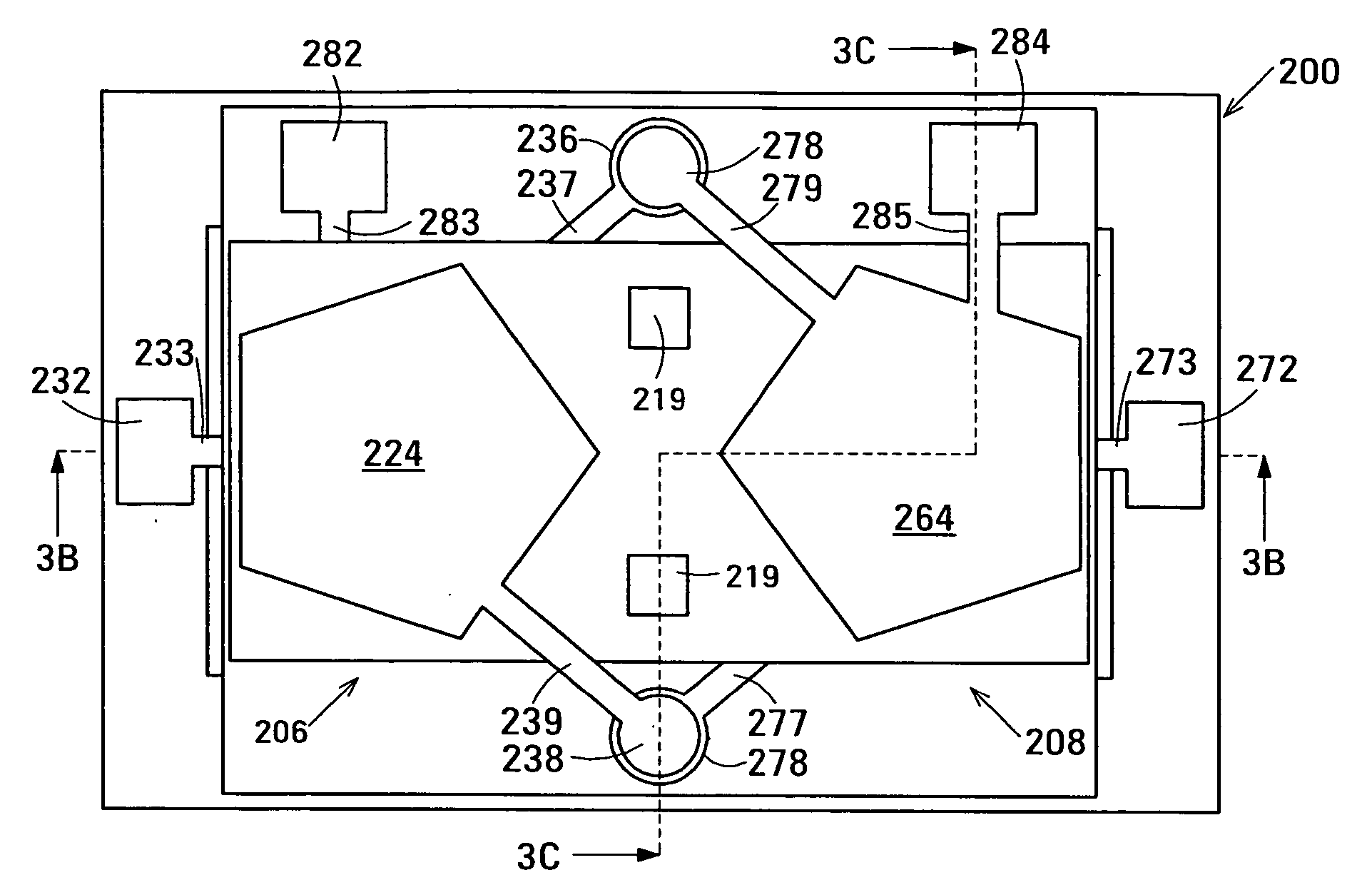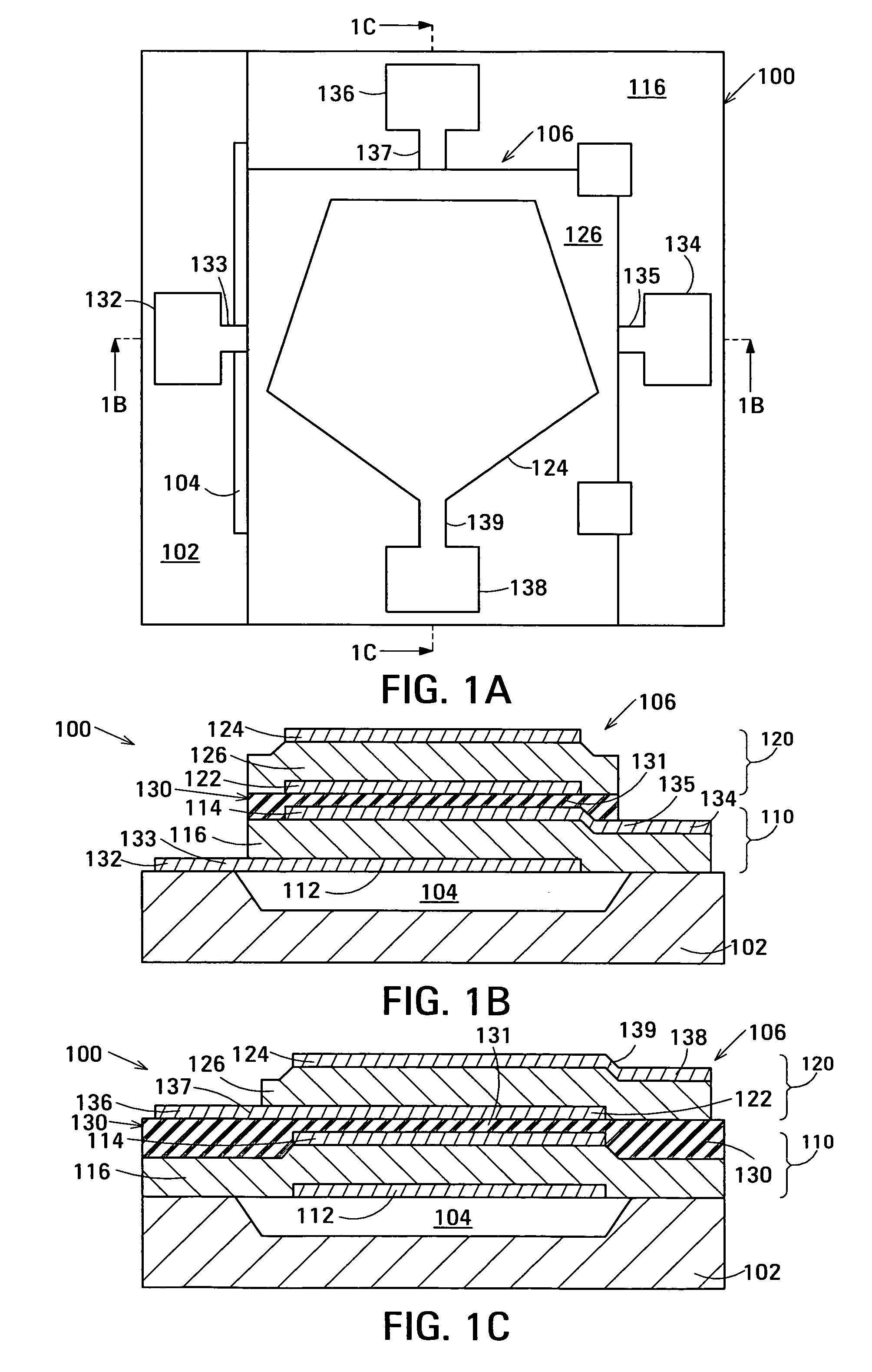Film acoustically-coupled transformer
a transformer and acoustic coupling technology, applied in the direction of multiple-port network, electrical apparatus, impedence network, etc., can solve the problems of coil-based transformers becoming impractical, transformers not having all of these properties, and transformers that do not provide electrical isolation. , to achieve the effect of less importance, and high common-mode rejection ratio
- Summary
- Abstract
- Description
- Claims
- Application Information
AI Technical Summary
Benefits of technology
Problems solved by technology
Method used
Image
Examples
first embodiment
[0033]FIG. 2 is a graph showing how the calculated frequency response of FACT 100 depends on the acoustic impedance of the acoustic decoupling material of layer 131 that constitutes acoustic decoupler 130. The embodiment illustrated has a center frequency of about 1,900 MHz. Calculated frequency responses for embodiments in which the acoustic decoupling material of the acoustic decoupler has acoustic impedances of about 4 Mrayl (polyimide—curve 140), 8 Mrayl (curve 142) and 16 Mrayl (curve 144) are shown. It can be seen that the bandwidth of FACT 100 increases with increasing acoustic impedance of the acoustic decoupling material. In the embodiment in which the acoustic impedance is 16 Mrayl, the resonances of the FBARs are over coupled, which causes the characteristic double peak in the pass band response.
[0034] The embodiment of acoustic decoupler 130 shown in FIGS. 1B, 1C and 1D is composed of layer 131 of acoustic decoupling material with a nominal thickness equal to one quarter...
second embodiment
[0044]FIG. 1E is an enlarged view of part of FACT 100 showing acoustic decoupler 130 that incorporates a Bragg structure 161. Bragg structure 161 is composed of a low acoustic impedance Bragg element 163 sandwiched between high acoustic impedance Bragg elements 165 and 167. Low acoustic impedance Bragg element 163 is a layer of a low acoustic impedance material whereas high acoustic impedance Bragg elements 165 and 167 are each a layer of high acoustic impedance material. The acoustic impedances of the Bragg elements are characterized as “low” and “high” with respect to one another and additionally with respect to the acoustic impedance of the piezoelectric material of layers 116 and 126. At least one of the Bragg elements additionally has a high electrical resistivity and a low dielectric permittivity to provide electrical isolation between input and output of FACT 100.
[0045] Each of the layers constituting Bragg elements 161, 163 and 165 has a nominal thickness equal to an odd int...
PUM
 Login to View More
Login to View More Abstract
Description
Claims
Application Information
 Login to View More
Login to View More - R&D
- Intellectual Property
- Life Sciences
- Materials
- Tech Scout
- Unparalleled Data Quality
- Higher Quality Content
- 60% Fewer Hallucinations
Browse by: Latest US Patents, China's latest patents, Technical Efficacy Thesaurus, Application Domain, Technology Topic, Popular Technical Reports.
© 2025 PatSnap. All rights reserved.Legal|Privacy policy|Modern Slavery Act Transparency Statement|Sitemap|About US| Contact US: help@patsnap.com



